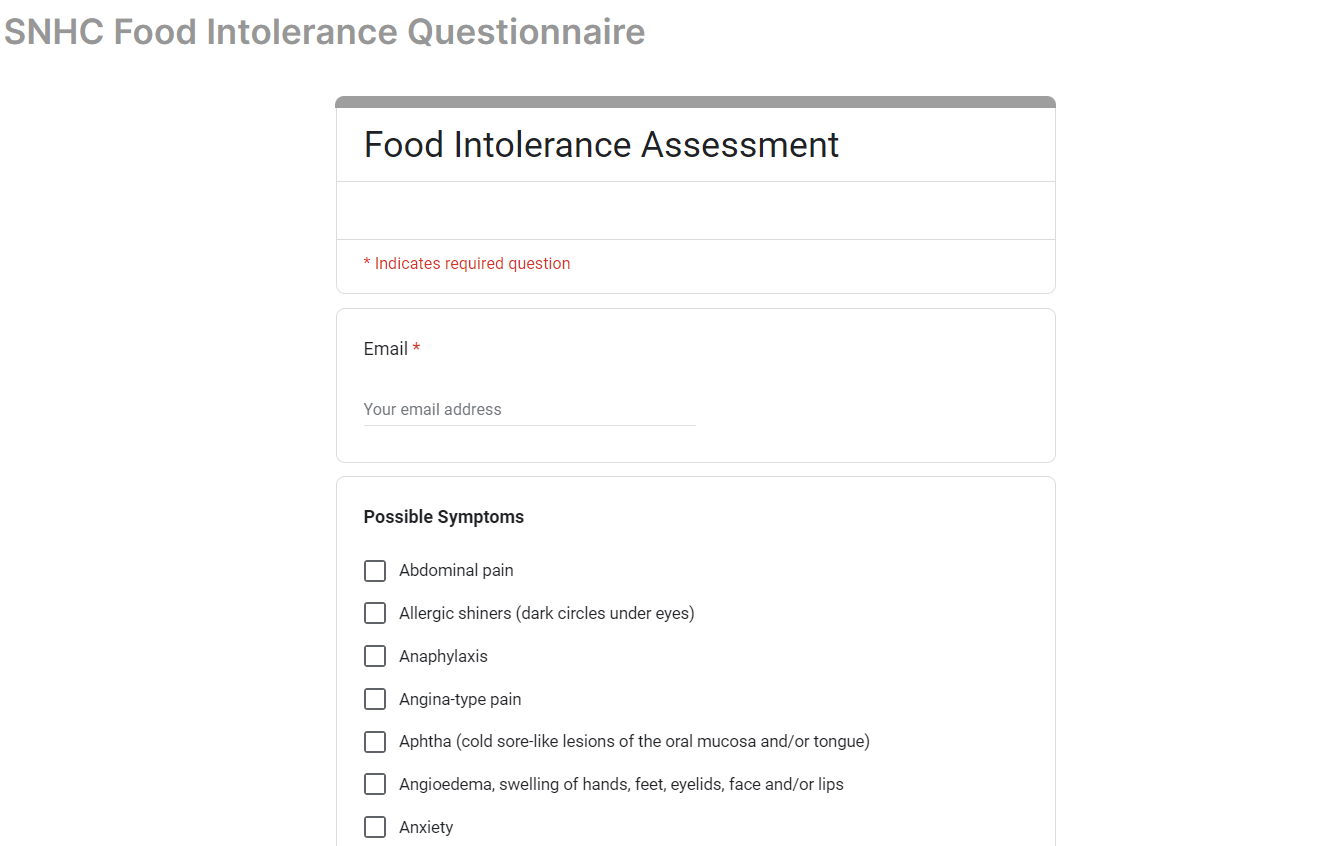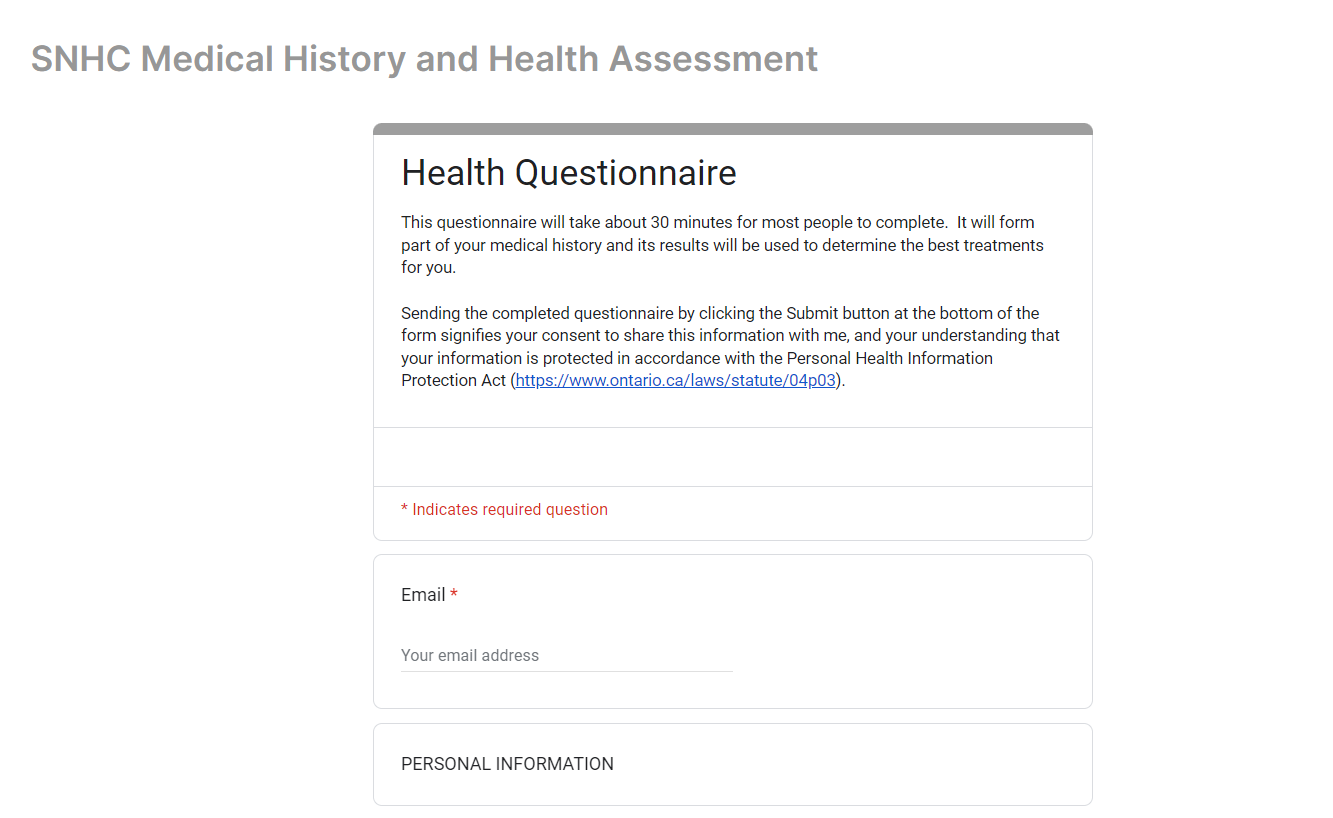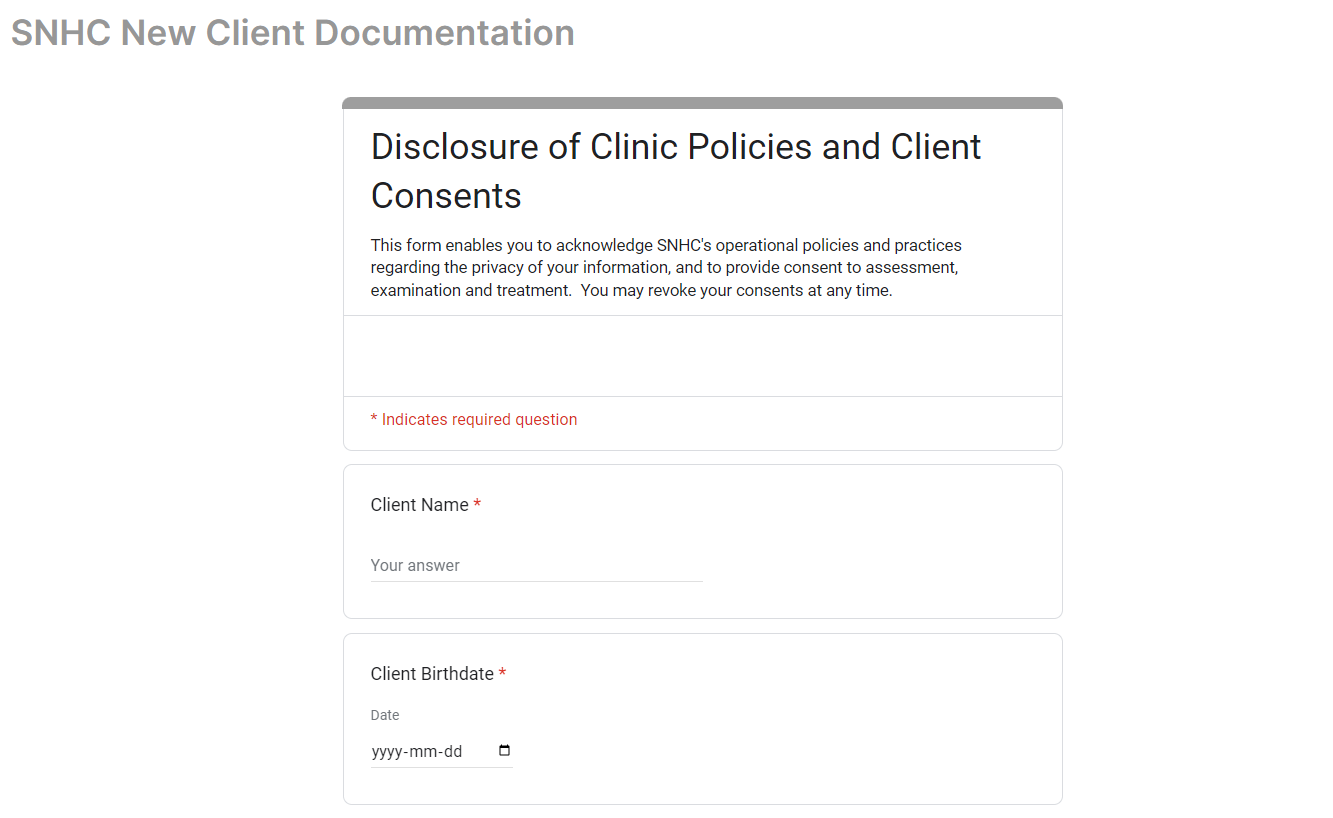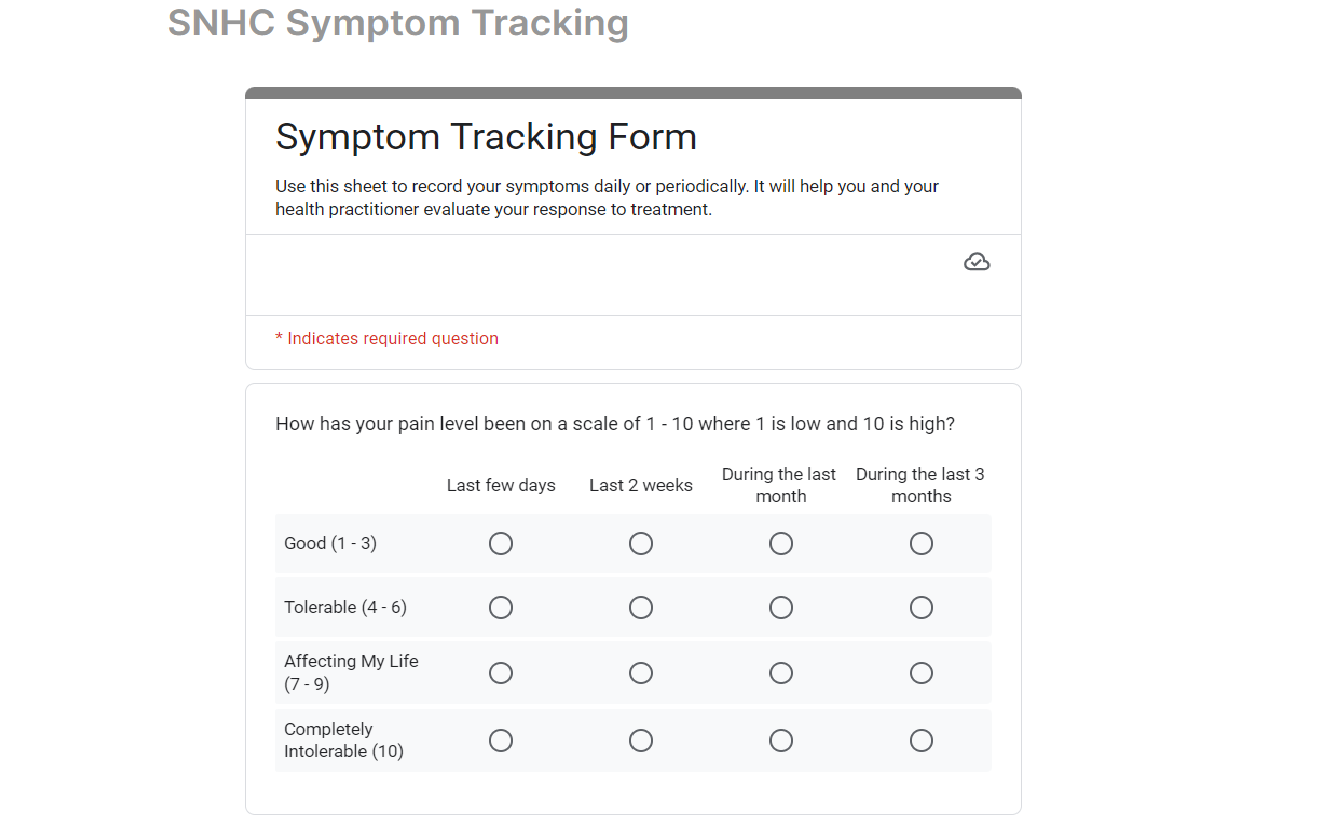[googleapps domain=”docs” dir=”forms/d/e/1FAIpQLScCZs-e5pWuWdeEDQH2WqjH7dfwomsnPJgK9s7f4T3lkzzSiA/viewform” query=”embedded=true” width=”1200″ height=”5104″ /]

Redefining wellness, together

[googleapps domain=”docs” dir=”forms/d/e/1FAIpQLScCZs-e5pWuWdeEDQH2WqjH7dfwomsnPJgK9s7f4T3lkzzSiA/viewform” query=”embedded=true” width=”1200″ height=”5104″ /]

[googleapps domain=”docs” dir=”forms/d/e/1QMt-J4Yq2u1n_HBLDetxBG5IExvlR1gj39ZAo72opCM/viewform” query=”embedded=true” width=”1200″ height=”19723″ /]

[googleapps domain=”docs” dir=”forms/d/e/1FAIpQLSeWBcmHb0a6E5VRzD7gKJhsbeHyFVqWenG45qiCGGC8p8uK0w/viewform” query=”embedded=true” width=”1200″ height=”6186″ /]

[googleapps domain=”docs” dir=”forms/d/e/1FAIpQLSedrCJM7n-p44Fhrq56w0XwSUSFblLZsMoWjVuiLEfhPAAG5A/viewform” query=”embedded=true” width=”1600″ height=”5104″ /]


Dietary advice can be confusing.
The internet is a great source of information but unfortunately not all of the information is of good quality, and this is especially true regarding diets, nutrition and health. As a result, many people are confused about diets: low carb, low fat, high protein, Keto, Paleo and so on. Here are some typical questions:
What is the difference between the Paleo and a Keto diet?
A key difference is whether the diet causes ketosis or not. The Paleo diet is not necessarily ketogenic while the Keto diet is necessarily ketogenic.
Ketone bodies are chemicals that are created when your metabolism shifts from using carbohydrate as its immediate source of fuel to using fat for that purpose. The Keto diet takes its name from its propensity to generate ketone bodies, or to induce ketosis, the process of creating ketones. It is intended to cause ketosis. The Paleo diet restricts the intake of starchy foods but doesn’t obligate you to skew your caloric intake towards foods that are high in protein and/or fat. As a result, it doesn’t have to cause ketosis.
Most of the early research on ketogenic diets was done in connection with their use as a treatment for people with neurological illnesses such as epilepsy[1]. In the 1970’s, Dr. Robert Atkin’s popularized the ketogenic approach as a treatment for obesity and heart disease[2].
The Paleo diet is mostly what people who are not anthropologists imagine paleolithic people ate. In my opinion, the theory (propaganda) behind it is mostly BS. According to National Geographic,
“There’s been a consistent story about hunting defining us and that meat made us human,” says Amanda Henry, a paleobiologist at the Max Planck Institute for Evolutionary Anthropology in Leipzig. “Frankly, I think that misses half of the story. They want meat, sure. But what they actually live on is plant foods.” What’s more, she found starch granules from plants on fossil teeth and stone tools, which suggests humans may have been eating grains, as well as tubers, for at least 100,000 years—long enough to have evolved the ability to tolerate them.
The notion that we stopped evolving in the Paleolithic period simply isn’t true. Our teeth, jaws, and faces have gotten smaller, and our DNA has changed since the invention of agriculture. “Are humans still evolving? Yes!” says geneticist Sarah Tishkoff of the University of Pennsylvania.[3]
That said, the Paleo diet can be a healthy option for many people. I just think it’s unfortunate and unnecessary to eliminate entire food groups (dairy, legumes, grains) based on an imagined impression of how our ancestors ate.
What kind of diet should I follow?
If you are in good health, you do not need to follow any particular kind of diet. Most people thrive on a varied approach to eating that emphasizes vegetables. This does not mean you need to become a vegetarian or a vegan. It does mean you should consider Michael Pollan’s advice to
Eat food. Mostly plants. Not too much. [4]
Pollan has also recommended that we not eat anything our grandmothers would not recognize as food. Since this recommendation has a shelf-life by virtue of the speed at which food products are developed, I think we should interpret this to mean we should focus on food in a natural or near-natural state. Visually, this translates into an intake that looks something like this:

What you see illustrated is balanced portions of proteins and starches served with an abundance of non-starchy vegetables as a reminder to pay attention to portions as well food content. This approach typifies the advice given in programs such as Weight Watchers and Jenny Craig but it works for people who want to maintain a healthy weight as well as those who want to lose a few pounds.
While there is no one-size-fits-all dietary solution, this approach will work for most people, especially those that do not have metabolic issues, such as type 2 diabetes, for example. If you have problems with your blood sugar, you might need to reduce the proportion of starchy foods and sweets (including fruits) further. In this instance, discuss your needs with your MD, and ND or a dietician.
Footnotes
[1] Ketonemia and Seizures: Metabolic and Anticonvulsant Effects of Two Ketogenic Diets in Childhood Epilepsy
[2] Atkins Diet | Encyclopedia.com
Parts of this article originally appeared on Quora.

Vaccination programs for flu and COVID-19 are available in most areas in Canada and provide the best protection against viral illnesses. If you don’t want to get shots, you can still provide some protection to yourself and others through other means.
The great thing about non-vaccine methods of protection is that they are natural and not-specific to the type of disease-causing organism.
Today’s superbugs require super-vigilance. Take some time during this year’s flu season to learn to be a new kind of superhero – the kind who protects his own health and others’.
Flu, for example, is more properly known as “influenza”, and is a serious respiratory illness caused by specific viruses. Its symptoms include fever, chills, runny nose, sore throat, muscle pain, headache, coughing, weakness, fatigue and, occasionally, nausea and vomiting. COVID-19 can also cause these symptoms.
The weakened state caused by the flu can predispose a person to other serious illnesses such as pneumonia. It can be difficult to distinguish flu from a case of the common cold without doing a lab test but usually flu is characterized by high fevers of sudden onset and extreme fatigue, symptoms that are less marked and less frequent with colds.
A viral illness can be transmitted directly through exposure to contaminated droplets generated by a sneeze or cough. It can be transmitted indirectly by handling an object that has become contaminated by these droplets, then touching your face, nose or mouth.
It takes more than mere exposure, though, to become ill. There are also a number of “host factors” that have a big impact. These include things such as:
The two sets of factors that are involved in contracting viral illnesses (transmission factors and host factors) are the things we want to influence in prevention.
You can break the transmission cycle by:
You can influence host factors as follows:
– decrease the amount of sugar and processed foods you consume
– engage in regular, moderate exercise
– proactively manage your stress
– ensure you are getting adequate sleep
– Vitamins C and D, and zinc
– hydration
– avoidance of CRAP (carbonated, refined, artificial, processed foods)
– consumption of protective foods such as garlic, onions, ginger, turmeric (in curry), cayenne pepper, honey, mushrooms, peppers, spinach, oysters, sesame and pumpkin seeds
If you become sick:
I understand that many people feel they just can’t miss a day of work for any reason. Going to work when you have an infection is not being heroic, it’s being idiotic. Your co-workers do not want to share your germs. When you look after yourself to avoid contracting an infection, and stay home when you become ill, you’re taking action to protect others too. And that IS heroic.

Skepticism is essential if you want to avoid being taken in by a scam or a useless fad. Healthy skepticism draws on your ability to think critically to dispel worries in response to false alarms.
I often get asked about health information that is circulating in emails or on the internet. Some examples include:
I always investigate the claims made in these emails and usually find the majority are false.
Use some healthy skepticism if you receive one of these alarming emails, even if it comes from someone you know or what seems to be a credible source.
How do you check the truthfulness of these warnings? Here are a few tips:
If someone suffers from the information you forwarded, you bear some responsibility for the harm they experience. Be wise, be a bit skeptical.

We’ve all heard the advice to drink at least 8 glasses of water per day. It’s enough to make you feel like your back teeth are floating! But is it the right amount?
You know that going more than a few days without enough to drink can be fatal. Do you know why?
We have trillions of cells in our bodies in each of which millions of chemical reactions are taking place. Most of these reactions are facilitated by the actions of hydrogen (H) and hydroxide (OH) ions. Water (H2O = H+OH) is a prime source of these ions. If there isn’t enough water to provide them, the chemical reactions don’t occur and the cells begin to die.
Thinking about this on a higher level, water is essential for most of our body fluids, including blood, tears, cerebral spinal fluid and the fluid in our joints. If we are not sufficiently hydrated, we also don’t make enough of these protective fluids.
With respect to fluid intake, our goal is to avoid dehydration. So, how do you know if you’re dehydrated? Here is a list of some signs and symptoms†:
†adapted from https://www.mayoclinic.org/diseases-conditions/dehydration/symptoms-causes/syc-20354086
Does it really make sense that each of us needs 8 glasses of water per day, given we come in different ages, sizes, and body compositions and engage in different levels of activity?
Perhaps not. I think this idea derives from an estimate of daily physiological water loss, thought to be about 2 litres for an “average” person.
Other ways of calculating water intake are based on body weight. For example, the idea that half your weight in pounds equals the number of ounces you should drink. This means a person who weighs 130 pounds should drink 65 ounces – or about 8 glasses that are 8 ounces each (which ties into the 8 glasses a day rule of thumb).
Some practitioners suggest using the colour of your urine as a gauge. If you’re well hydrated, your urine should be pale yellow (think “banana”) before it hits the water in the toilet. If you’re not well hydrated, your urine will be darker (think “lemon”, or worse, “orange”). Others recommend being guided by thirst.
None of these methods is perfect for ensuring good hydration. Age and stage of life have a big impact on the amount of water needed as well as perceptions of thirst.
For example, children and the elderly are less likely to experience thirst even when they are dehydrated, and pregnant women may need to drink more as their weights (and blood volumes) increase during their pregnancies.
Also, the thirst and urine colour methods evaluate water intake after the fact. That’s not too helpful if your goal is to prevent dehydration.
Our suggestion:
Combine methods to estimate how much water you need. Start by using the weight calculation to determine an estimate of what you should drink on an average day. Increase your intake if you’ve been perspiring or drinking “dehydrating” fluids that contain caffeine or alcohol. Make a quick check of the colour of your urine before you flush and adjust your intake accordingly. Lastly, drink some water if your mouth feels dry.

In North America, we take water quality for granted so it can be confusing to try to sort out how sources compare, such as bottled water and tap.
If you live in Ontario, Canada, you might remember the water quality fiasco that resulted in tragedy in the community of Walkerton in 2000. Many people became ill due to E. coli infections sourced from contaminated water. Some people died. This situation illustrated that access to clean water can affect community health in developed nations.
In the Walkerton case, the diligence needed to protect the water supply was undermined by a combination of under-funding and the incompetence of those responsible to oversee the community’s water safety.
Certainly, water safety is a huge concern because the quality of the water supply can easily be compromised. As a result, we should bear this in mind when politicians begin to broadcast the need to make funding cuts in health care or environment monitoring. Water and food safety should never be targets for these kinds of cutbacks – there’s too much at risk.
The Ontario Ministry of Health provides guidance on a number of water safety issues pertaining to municipal and private (well) water sources here:
http://www.health.gov.on.ca/english/public/pub/pub_menus/pub_watersafe.html
Various programs in place to protect regional water quality are outlined by the Ministry of the Environment here:
http://www.ene.gov.on.ca/environment/dwo/en/index.htm
In summary, these programs require water to be periodically tested on about 158 parameters at various points from source to tap. Water system operators take samples which are tested at provincially licensed labs. I’ll leave it to you to decide if the program in your community provides the rigorous level of oversight needed.
Bottled water is big business, about $100 billion globally. During the past 20 years, there has been a surge in its popularity because of convenience and implied quality benefits. However, more recently, we’re perceiving the disadvantages of relying on bottled water.
Sources for bottled water may be natural or drawn from a municipal system. The water must be treated to ensure it complies with the regulatory standards for safety. Treatment methods include
Most types of bottled water do not contain fluoride or chlorine.
No matter treatment is used, bottled water in Canada must comply with safety regulations under the Food and Drugs Act. You can view the content of the Act and its regulations here:
http://laws-lois.justice.gc.ca/eng/acts/F-27/
Also, there are guidelines related to microbiological safety that apply. These are on view here:
http://www.hc-sc.gc.ca/fn-an/res-rech/analy-meth/microbio/volume1/index-eng.php
Standards, regulations and guidelines are intended to ensure bottled water is at least as safe as tap for common contaminants such as lead and potentially infectious microorganisms.
However, there can be other sources of contamination, such as chemical contamination with bisphenol A (BPA).
Medically, BPA is considered to be an “endocrine disruptor”. In other words, it mimics the activity of some hormones and can disturb normal hormonal balance.
The hard plastic used to make sports water bottles may leach BPA. Most manufacturers supply their products in bottles that contain polyethylene terephthalate (PET, PETE) instead of BPA.
Are there concerns about PET? In a word, yes. Here is a study that showed the element antimony can leach from the PET in bottles into water when stored in places where the temperature was warm or hot.
In addition to the concerns about contamination from these bottles, there are also many concerns about environmental/ecological issues associated with
Most adults need to drink at least 8 glasses of water daily, so convenient access to safe, good-tasting water is important.
I recommend that people rely on tap water as their main source. Drink it straight from the tap or store it in a glass pitcher. When on the go, take water with you in a stainless steel bottle.
Let tap sit at room temperature for a few hours before drinking it because most of the chlorine will off-gas from the water.
Use a filtration system on your tap water if you’re concerned about fluoride or other additives/contaminants. There are many types of these; find one that suits your budget and lifestyle.

Burnout. Sometimes it charges into your life. Sometimes it sneaks up on you.
Serious burnout results from the interplay of circumstances and personality. Circumstances such as your job, financial and relationship stresses. Personality factors such as ambition/drive, altruism, and degree of comfort in setting boundaries.
Your health plays a role too, especially if you are dealing with or susceptible to depression and anxiety.
The first step to dealing with something is always to acknowledge you have a problem. If you continue to think you have to “tough it out”, or that ignoring it will make it go away, you will continue to have episodes of burnout.
Advice along the lines of “just stop” is often unhelpful. Stopping is not always feasible. Some people don’t have the option of quitting their jobs or leaving difficult relationships. Nevertheless, all things in life occur because of the choices, compromises and trade-offs we make, and this applies to burnout as much as anything else.
How do you trade burnout for balance?
To begin, you need to understand what “balance” is going to be for you. Balance can be static or dynamic. People who prefer static balance like to schedule everything, and may place limits on the amount of time they will devote to a given activity in a given time period in order to maintain their schedules. They place a high priority on keeping to their schedules.
People who prefer dynamic balance will devote more time to work, for example, in one week and more to personal needs in another week; their balance point shifts to reflect changes in their priorities.
Your balance needs to take into account the degree to which your prefer static balance versus dynamic. It also needs to reflect your values and priorities. In an ideal world, your priorities align with your values. For example, if time with your family is your number one value, it should also have a high priority.If you examine how you set priorities and what you spend the most time on, and compare these to your list of values, it can show you where you are out of balance. You are then in a better position to make decisions about how you structure your time or whether you need to re-evaluate your priorities.
What about the role your health plays?
Many chronic conditions have their roots in lifestyle and dietary choices, or are at least influenced by them. You could think of these aspects as the “life” part in the work-life balance equation. If you are allowing heath-supporting habits such as regular exercise, a wholesome diet and adequate rest to rank highly on your list of life priorities, then you have “programmed” your life balance in favor of good health.
Look at other things that can help to help you strike the right balance:
Wayne Dyer says:
“Change the way you look at things and the things you look at change.”
It’s true, and completely under your control.